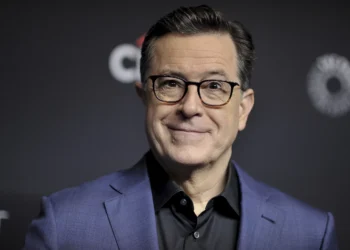“We just completed a massive Deal with Japan, perhaps the largest Deal ever made,” President Donald Trump wrote on Truth Social last night. “There has never been anything like it.” He added his now customary conclusion: “Thank you for your attention to this matter!”
As I’ve noted before, Trump is a master of hyperbole, but this is a big deal. “Japan will invest, at my direction, $550 Billion Dollars [sic] into the United States, which will receive 90% of the Profits,” he also said in laying out some particulars. “Japan will open their Country to Trade including Cars and Trucks, Rice and certain other Agricultural Products, and other things. Japan will pay Reciprocal Tariffs to the United States of 15%.”
That rate is down from the 25% Trump had recently threatened. Right around the time of that threat, The Wall Street Journal’s news desk headlined, “Trump Said Trade Deals Would Come Easy. Japan Is Proving Him Wrong.” Three weeks later, here we are. It’s almost like the media should learn some patience.
On April 2, Trump announced a slate of “Liberation Day” tariffs, and he used a seemingly odd formulation to determine rates for each nation. Then he backed off, then he pushed hard again. It’s all part of his typical Art of the Deal style — his “shock and awe” strategy. His tactics create an opening for Leftmedia panic and, initially at least, market volatility, but they often yield good results.
In May, he announced a major trade deal with the UK. Then it was Vietnam and Indonesia, and now Japan. South Korea will likely come soon, along with other nations. Perhaps the progress is slower than Trump hoped, but it’s progress nonetheless.
When it comes to Japan, the world’s fourth-largest economy, automobiles are the most crucial component. After World War II, the Japanese auto industry took off, and by the 1980s, it was causing trade tensions with the U.S. Japan’s cheaper and often superior autos were taking critical market share from the American Big Three. Japanese manufacturers built numerous plants in the U.S. over the last four decades, and their brands now produce nearly four million vehicles in America annually.
By contrast, American manufacturers sent about 16,000 vehicles to Japan in 2023. Let’s just say the $70 billion overall trade deficit with Japan in 2024 wasn’t to Trump’s liking.
Yet those trade deficits give Trump most of the leverage with tariffs. If American consumers choose other brands to avoid higher prices, it hurts the country that runs a trade surplus with the U.S., prompting negotiations that often work out in America’s favor.
As we’ve previously noted, tariffs aren’t always about trade. They’re often about American security interests with allies and adversaries alike.
In Japan’s case, that nation has experienced a bit of a MAGA-style movement of its own lately. According to the Washington Examiner, recent gains by Japan’s new right-wing populist Sanseito party are due to a growing “rejection of globalization’s effects on Japanese society and a desire to reorient the nation’s politics to primarily serve the interests of the island’s overwhelming ethnic majority.” That certainly sounds familiar. The party got its start in 2020 by rejecting COVID tyranny.
Japan’s struggles with globalization and its turn toward right-wing populism both mirror those of the U.S. over the last decade, as well as in numerous other countries around the globe. The cause is similar in almost every case: Unchecked immigration fueled by a cratering birth rate and aging population, as well as the acute sense that political leaders are not prioritizing the needs of their own citizens.
Trade deals such as the one Trump just engineered are possible because of this deeper upheaval. Japanese Prime Minister Shigeru Ishiba was caught between Trump’s tariff threat and the Sanseito push to put Japan First. After losing his party’s majority in this past weekend’s elections, the not-conservative-enough leader had to make a deal with the U.S., if only to justify not resigning.
Philosopher and author Ayn Rand generally defined greed as rational self-interest. In the case of international trade deals, it’s reasonable to conclude that pursuing such goals is advantageous to every nation. Compromises must be made, of course, but when each country benefits, the deals are simply better for everyone.















